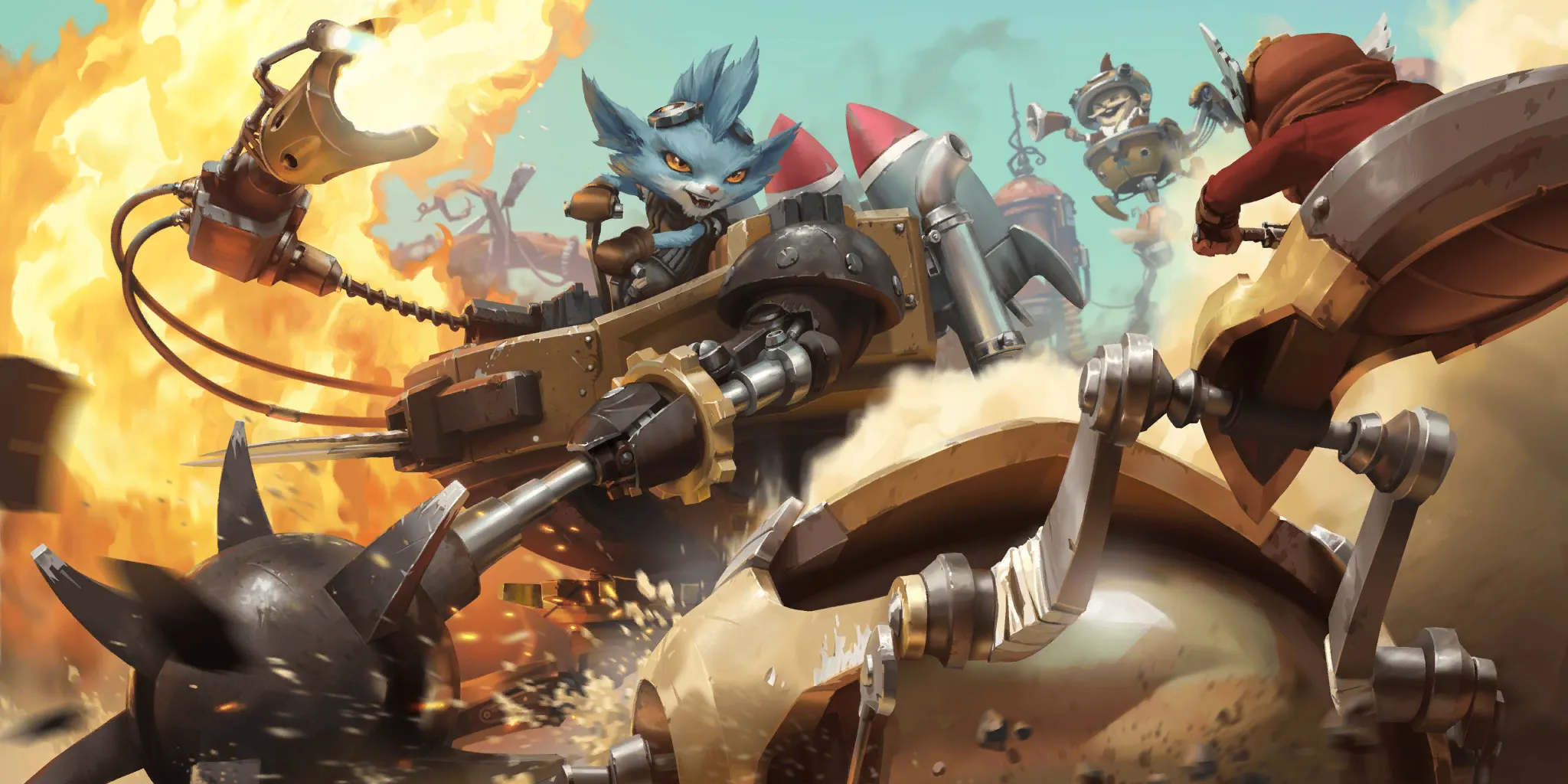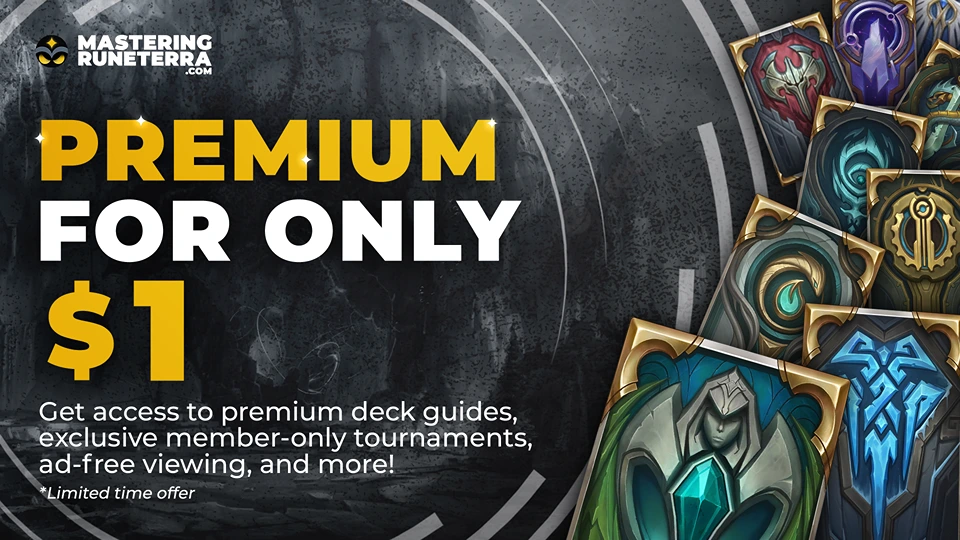Best LoR Decks: Rumble Vayne
Rumble DE has been a deck that has popped up from time to time since the release of everybody's favorite Mecha Yordle – having a 5/4 Quick Attack, Impact, SpellShield unit attacking multiple times in a...
This is one of our Premium articles
• Try our Premium Subscription for only $1 for the first month get access to Deck Guides for all the top decks, ad free viewing, subscriber only tournaments and a private Discord channel and unique role
Level up your game with the Mastering Runeterra Premium Membership!



